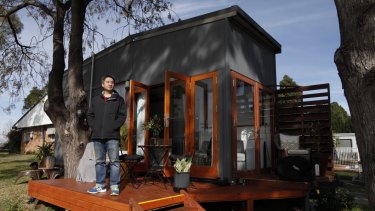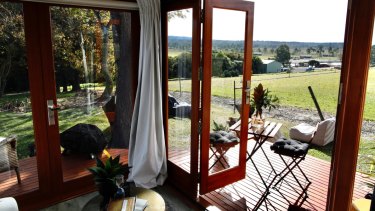Tiny Homes from Quickest Built Homes

By Quickest Built Home alert!
Morrison government’s bid to grow the tiny home industry
The Morrison government wants to make tiny homes a bigger deal.
Industry Minister Karen Andrews, a self-described fan of tiny homes, says she wants to see the prefabricated building sector grow by $30 billion over the next five years. The sector currently makes up about three to five per cent of Australia’s $150 billion construction industry, but Ms Andrews says it could grow to 15 per cent by 2025.

The Industry, Science and Technology Minister will announce a study on Sunday which will look at ways to develop the prefabricated building industry.
“What do we need to do to grow this sector?” Ms Andrews told The Sun-Herald and The Age.
The government has set aside $2 million for the initial study and then plans to set up an innovation lab to help manufacturers design prefabricated buildings.

Ms Andrews said there was a “massive opportunity” to boost the building and construction industry and potentially create an estimated 20,000 new jobs.
The Industry Minister added there were social and lifestyle benefits to tiny homes, noting “we’re also very mindful of the cost of housing”. Tiny homes can cost well over $100,000, but an entry-level new home (with a toilet and shower) can sell for as little as $40,000.

Ms Andrews said tiny homes could provide more affordable accommodation, as well as extra space for family members or guests: “there’s so many options with tiny homes.”
The Industry Minister said she loves the concept of tiny homes. “It’s quite likely it may well suit me one day.”
The Housing Industry Association said there was a growing number of modular manufacturers in Australia and prefabricated homes were likely to become increasingly common.
HIA industry policy chief executive Kristin Brookfield said traditional construction methods for housing would always make up the largest part of the industry but modular homes and prefabrication had many advantages.
“You can it regardless of the weather,” she said. “You can have a level of quality control, you can be more precise.”
But Ms Brookfield said there were some difficulties with prefabricated buildings, including tiny homes, as building and planning codes were written with traditional construction methods in mind.
” funding and research program have the potential to break down some of these types of barriers to uptake and look at developing more fit for purpose rules for modular and off-site construction,” Ms Brookfield said.
She said that while people may want a tiny home in their back yard to provide extra accommodation, they still needed to meet local rules, such as what proportion of their land they could use, or how many dwellings they could have on their block.

Eric Hansen from QuickestBuiltHomes have been telling local and federal politicians to allow smaller subdivisions, as allowed in America and the UK and Europe, this will solve problems with people getting affordable housing sooner than later, without red tape delay!

It’s small, it’s compact, it’s easy to warm up, it’s cozy in winter,” Mr Hansen said
He added that construction of Tiny homes was very simple once the component parts were made, needing only a screwdriver and power tools!
Tiny home advocates have been talking to government agencies to try and create more standard regulations for tiny homes around the country, noting there were big differences depending on the local government area. “Some councils are alright, some councils are more picky.”

